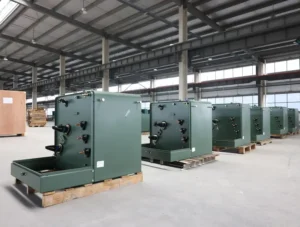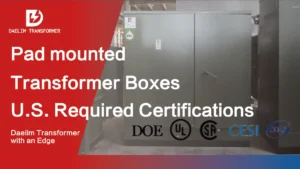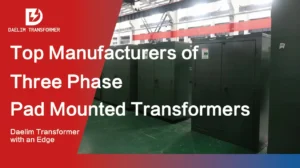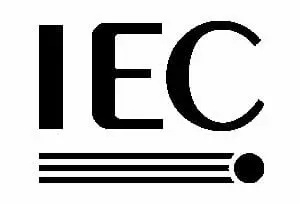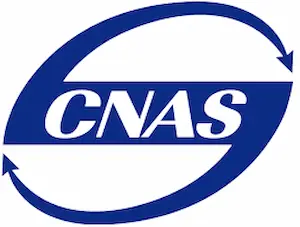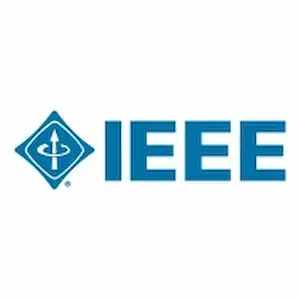Know More About The Main Transformer - DAELIM

This article is about the main transformer, if you want to know more information about the main transformer, please follow me.
There will include the cooling type, the role of the cooler, and how to deal with the failure of the main transformer cooler.
Pad-mounted Transformer
Dry-type Transformer
Oil immersed transformer
Table of Content
General requirements for cooling devices for power transformers
a. Install all cooling devices as specified by the manufacturer;
b. The cooling system with strong oil circulation must have two independent working power sources and can switch automatically. When the working power supply fails, it should automatically turn on the backup power supply and send out sound and light signals;
c. Strong oil circulation transformer, when the faulty cooler is removed, it should send out sound and light signals, and automatically (water-cooled can be manually) put into the standby cooler;
d. The auxiliary motors of fans, water pumps and oil pumps shall have overload, short circuit and phase failure protection; there shall be devices for monitoring the rotation direction of the oil pump motors;
e. The oil pump of the water cooler should be installed on the oil inlet side of the cooler, and ensure that the oil pressure in the cooler is greater than the water pressure by about 0.05MPa in any case (unless otherwise specified by the manufacturer). There should be a drain cock on the water outlet side of the cooler;
f. For transformers cooled by strong oil circulating water, the outlet of the submersible oil pump of each cooler shall be equipped with a check valve;
g. Transformers cooled by strong oil circulation should be able to control the switching of the cooler according to temperature and (or) load.
Read my article on Know More About How power transformer be manufactured, tested & delivered?
The role of the main transformer radiator
When there is a temperature difference between the oil temperature of the upper layer of the transformer and the oil temperature of the lower layer, the oil temperature convection is formed through the radiator, and after cooling by the radiator, it flows back to the oil tank to speed up the heat dissipation generated by the substation.
Transformer cooler cooling method
(1) Oil-immersed self-cooling ONAN
(2) Oil-immersed air-cooled ONAF
(3) Forced oil circulation water-cooled OFWF
(4) Forced oil circulation air cooling OFAF
(5) Strong pilot oil circulation air-cooled ODAF
(6) Forced pilot oil circulation water cooling ODWF
In the 500kV substation, the general large-scale transformer adopts the forced oil circulation air-cooling type, while the super-large transformer adopts the forced oil circulation guide cooling method.
Try for free information about the power transformer specification for tender in Canada
How Transformer Coolers Work?
Traditional power transformers are manually controlled fans, and each transformer has 6 groups of air-cooled motors that need to be controlled, and each group of fans is realized by relying on thermal relays. Controlled by the contactor, the fan determines the start and stop of the fan through logical judgment by measuring the oil temperature of the transformer and the overload process of the transformer.
The mechanical contacts are driven mainly by artificial mechanical contacts. Such traditional control can only be controlled manually. But its biggest disadvantage is that all fans have to start and stop at the same time, and the inrush current generated when starting is relatively large, which often causes damage to the components in the circuit. When the temperature is between 45 and 55 When the temperature is Celsius, all work is often used, which will bring huge waste of energy and cause great difficulties in the maintenance of equipment.
The main components used in the general cooling control system include relays, thermal relays, and various contact logic circuit control systems.
The control logic is very complex. In the actual process of operation, the contactor will come into contact with the contacts for many times. and burnout caused by separation. And the fan also lacks some necessary protections, such as overload, phase loss and overload, which will reduce the reliability of its operation and increase the cost of operation in the actual operation process.
Pure porcelain insulating bushing of 40kV and below
This kind of casing has two structures of guide rod type and cable type.
The guide rod type is used for low-voltage bushings of transformers; the cable-through type is used for 10~20kV high-voltage outgoing lines.
Let’s know learn more about the How to purchase a 10 mva substation transformer
The role of the oil tank and cooling device of the transformer
The oil tank of the transformer is the outer casing of the transformer, which contains iron core, winding and transformer oil, and plays a certain role in heat dissipation.
The function of the transformer cooling device is that when a temperature difference occurs in the oil temperature of the upper layer of the transformer, an oil circulation is formed through the radiator, so that the oil is cooled by the radiator and then flows back to the oil tank, which has the effect of reducing the oil temperature of the transformer.
In order to improve the cooling effect, measures such as air cooling, strong oil air cooling or strong oil water cooling can be adopted.
Keep on reading FAQ about residential transformer
Voltage regulation method of power transformer
1. Voltage regulation method
There are two types of voltage regulation methods for transformers: non-excitation voltage regulation and on-load voltage regulation. Non-excitation voltage regulation, also known as no-load voltage regulation, is to regulate the voltage when the transformer is stopped and without load; The non-excitation voltage regulating device is called a no-load tap-changer; the on-load voltage regulating device is called an on-load tap-changer.
2. On-load voltage regulation position
There are three types of transformer on-load voltage regulation positions: neutral point voltage regulation, medium voltage line end voltage regulation and high voltage coil line end voltage regulation. Among them, the structure and process of neutral point voltage regulation are relatively simple, and there are many applications.
3. On-load voltage regulating switch
The pressure regulating switch is also a tap changer. At present, the quality of domestically produced on-load tap-changers is not good enough, and most of the on-load tap-changers rely on imports, of which more are imported from German MR and Swedish ABB.
You may interested in Choose DOE Energy Efficient Single Phase Pad Mounted Transformer
How to deal with the failure of the main transformer cooler?
1. When the working power of section I and II of the cooler is lost, the “#1, #2 power failure” signal will be issued, and the main transformer cooler’s full stop trip circuit will be connected, and the dispatch should be reported immediately, and the set of protection should be disabled.
2. When the switching of the working power supply of the I and II sections fails during operation, the “cooler full stop” is on. At this time, the main transformer cooler full stop trip circuit is connected, and the protection should be reported and dispatched immediately, and the manual operation should be carried out quickly. Switch, such as KM1, KM2 failure, can not be strong excitation.
3. When any one of the cooler circuits fails, isolate the faulty cooler circuit.

